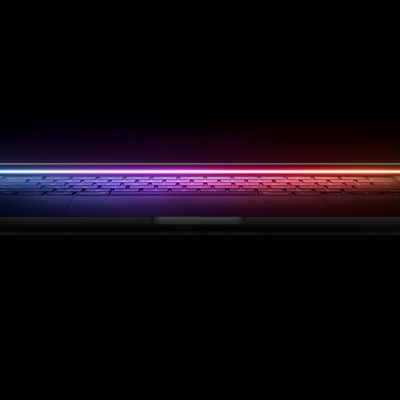Apple has not significantly tweaked iPhone screen sizes since the introduction of the iPhone 12 models in 2020, but that's set to change with the 2024 iPhone 16 lineup. The iPhone 16 Pro models will have notably larger display sizes than the current iPhone 15 Pro models. Here's what we know.

According to multiple sources, the iPhone 16 Pro and iPhone 16 Pro Max will feature an increase in display size compared to the iPhone 15 Pro and iPhone 15 Pro Max, measuring roughly 6.3 inches and 6.9 inches, respectively. To be more precise, the iPhone 16 Pro will have a 6.27-inch display (159.31 mm), while the iPhone 16 Pro Max will feature a 6.85-inch (174.06 mm) screen.
iPhone 16 Pro
| iPhone 16 Pro | iPhone 15 Pro | |
|---|---|---|
| Thickness | 8.25 mm | 8.25 mm |
| Height | 149.6 mm | 146.6 mm |
| Width | 71.45 mm | 70.60 mm |
| Display | 6.3" (159.31 mm) | 6.1" (155.38 mm) |
| Weight | 194 grams | 187 grams |
iPhone 16 Pro Max
| iPhone 16 Pro Max | iPhone 15 Pro Max | |
|---|---|---|
| Thickness | 8.25 mm | 8.25 mm |
| Height | 163.0 mm | 159.9 mm |
| Width | 77.58 mm | 76.70 mm |
| Display | 6.9" (174.06 mm) | 6.7" (169.98 mm) |
| Weight | 225 grams | 221 grams |
With the increase in display size, the dimensions of the iPhone's body will also increase. The iPhone 16 Pro and 16 Pro Max will be slightly taller than their predecessors, while also being somewhat wider.
The larger form factor of the devices will give Apple more internal space for components. The iPhone 16 Pro models could get larger, longer-lasting batteries for example. The display itself could see improvements, too (see below). Besides that, plenty of additional features are rumored.
Display Technology
Apple is weighing up the use of micro-lens technology to maintain or increase the brightness of OLED displays on next year's iPhone 16 models while potentially reducing their power consumption. Micro-lens arrays or MLA uses a uniform pattern of billions of lenses inside the panel to reduce internal reflection. The reflected light increases perceived brightness without increasing power consumption.

Next year's iPhone 16 could feature a more power-efficient display thanks to a new OLED material set that is reportedly being developed by Samsung specifically for Apple.
iPhone 16 and iPhone 16 Plus
We are not expecting size changes for the iPhone 16 and iPhone 16 Plus, and these devices will be the same size as the iPhone 15 and iPhone 15 Plus. However, with the iPhone 17 and iPhone 17 Plus in 2025, Apple is expected to also bring the larger 6.27- and 6.86-inch display sizes to its two standard iPhone models. As a result, expect the entire iPhone 17 lineup to use a taller aspect ratio of 19.6:9.
iPhone Sizes: A Brief History
- The Original iPhone to iPhone 4S (2007-2011): The first iPhone, launched in 2007, featured a 3.5-inch screen, a size that Apple maintained up to the iPhone 4S. This screen size was considered quite large at the time compared to many contemporary phones.
- iPhone 5 to iPhone 5S/SE (2012-2016): With the iPhone 5, Apple increased the screen size to 4 inches. This change addressed the growing consumer trend towards larger screens, allowing for an improved viewing experience while maintaining a comfortable grip.
- iPhone 6 and 6 Plus (2014): A significant change came with the iPhone 6 and 6 Plus, featuring screen sizes of 4.7 inches and 5.5 inches respectively. This move was a response to the burgeoning market of larger smartphones or "phablets." It marked Apple's foray into a segment that competitors like Samsung had been capitalizing on.
- iPhone 6S to iPhone 8 (2015-2017): The iPhone 6S, 7, and 8 series continued with the same size variants as their predecessors, 4.7 inches for the regular models and 5.5 inches for the Plus models.
- iPhone X and Beyond (2017-present): With the introduction of the iPhone X in 2017, Apple shifted to a new design paradigm, reducing bezels and introducing notch-based displays. The iPhone X had a 5.8-inch screen, which was a middle ground between the two previous sizes. Subsequent models expanded on this concept, with screen sizes increasing further in variants like the iPhone XS Max, iPhone 11 Pro Max, and later models.
- iPhone 12 mini & iPhone 13 mini (2020-2021): The iPhone 12 mini was introduced in 2020, and marked the first time since the original iPhone SE that Apple released a new model specifically designed to be smaller and more compact. Featuring a 5.4-inch screen, it catered to users who preferred smaller, more manageable phones that could be easily used with one hand. The iPhone 13 mini continued the trend, however reports and market analysis indicated that the overall demand for such a device was relatively low compared to Apple's larger models, and Apple has not replicated the option in iPhone lineups since.
What do you think about Apple's expected iPhone 16 size changes? Share your thoughts in the comments.






















